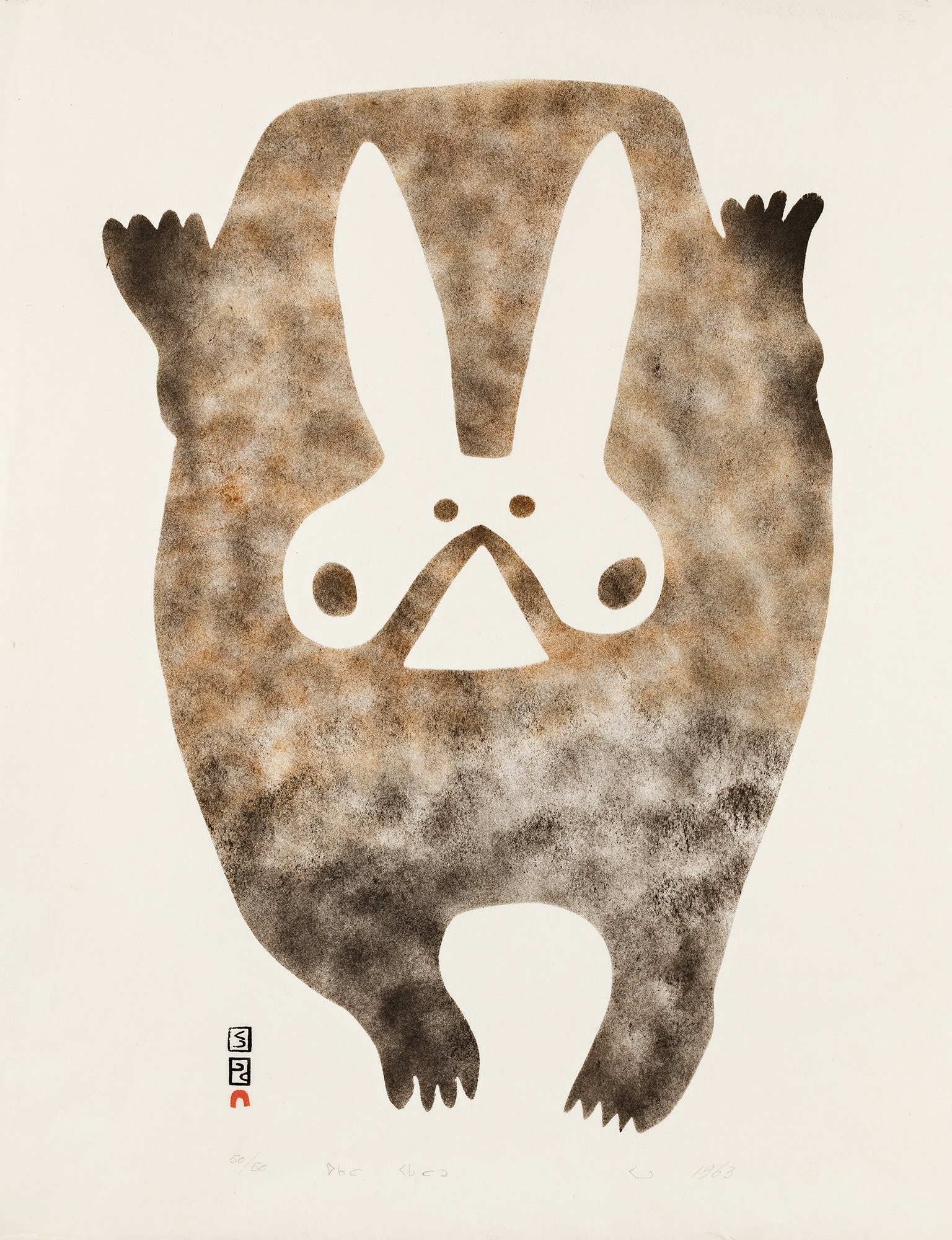Lot 7
PUDLO PUDLAT (1916-1992) m., KINNGAIT (CAPE DORSET)
Printmaker: LUKTA QIATSUK (1928-2004) m., KINNGAIT (CAPE DORSET)
Running Rabbit, 1963 #35
stencil, 25 x 19.75 in (63.5 x 50.2 cm).
50/50
Estimate: $3,500 — $4,500
Price realized: $6,500
Provenance
Private Collection, Australia.
Running Rabbit embodies the artist’s enduring legacy as one of the most experimental figures in Inuit art. Curator Marie Routledge remarks that Pudlo was most effective in his use of negative space, sometimes deliberately leaving the interior spaces of his drawings white to stand out in a brilliant contrast. One example of this technique can be seen in Eskimo Woman with Ulu, 1960 (see First Arts, May 2019, lot 7). The same approach is taken here in Running Rabbit. Ceaseless experimenter that he is, however, Pudlo has added another intriguing visual element; Running Rabbit presents to the viewer essentially two compositions. Right side up, we see a front-facing hare frozen in a mad dash, but when the sheet is inverted we are presented with a portly walrus, basking contentedly on the page.
1. In Marie Routledge and Marion Jackson, Pudlo: Thirty Years of Drawing (Ottawa: National Gallery of Canada, 1990), p. 19.
References: Sheila Butler discusses Running Rabbit in the Spring 1976 issue of The Beaver, in “The First Printmaking Year at Baker Lake” by (p. 17-26). She writes: “We were overwhelmed with the [1964 Cape Dorset print] exhibition… Another large print which I remember clearly from that show in 1964 is a stencil image of a direct front view of a rabbit, ‘Running Rabbit’ by Pudlo, 1963. Previously I had never thought that such a complete and vivid image could be possible with simple stencil technique. The memory of this great print influenced me deeply as I began to work with the Baker Lake people to produce stencil prints of their own.” Butler’s article was reproduced in Alma Houston, ed., Inuit Art: An Anthology (Winnipeg: Watson and Dwyer, 1988), pp. 101-111. Jack Butler reiterates the inspiration he and his wife drew from Running Rabbit in “How the Time I Spent with the Inuit Influenced my Work as an Artist” in Inuit Art Quarterly (Summer 1987), pp. 7-9. Jack Butler writes: “During the years immediately prior to going to Baker Lake, two images were becoming more and more central to my thinking as an artist: the 1963 stencil print from Cape Dorset entitled Running Rabbit (based on a drawing by Pudlo Pudlat) and the cut paper collages by Henri Matisse. Both were characterized by simplicity of means, directness of approach, and a compression of many levels of meaning into a simple formal statement.”

